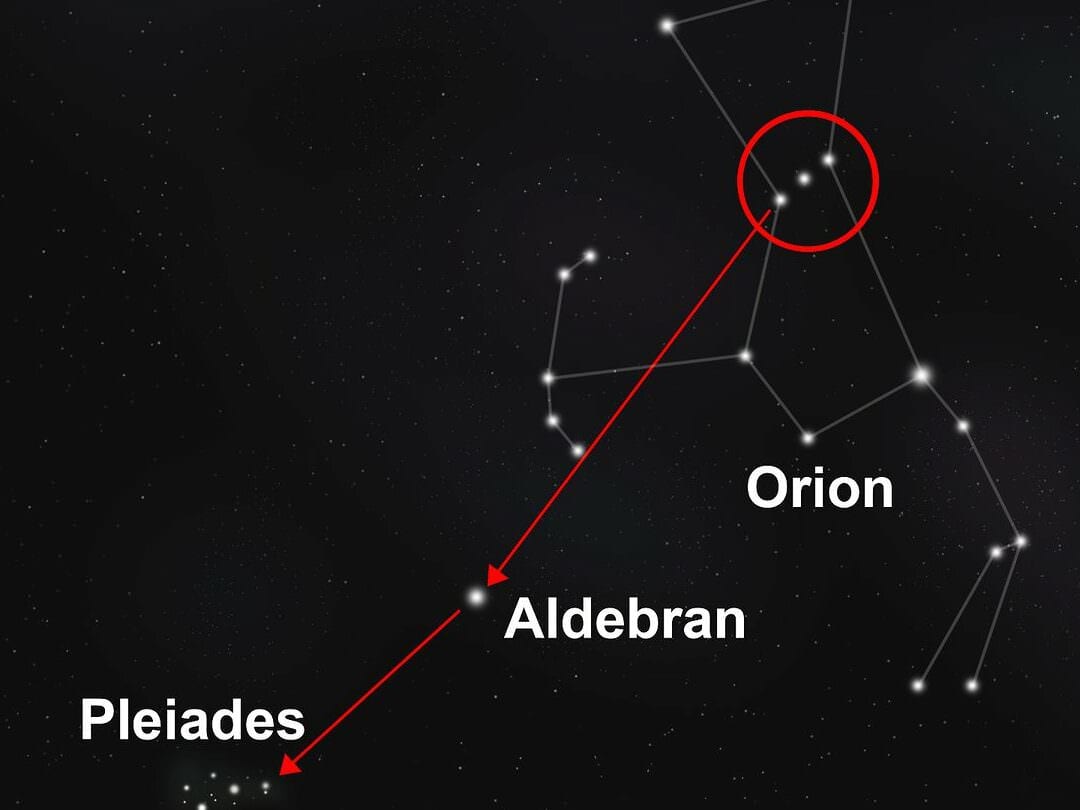
The Universe is vast and full of wonders. It is estimated that there are approximately 10 trillion galaxies in the Cosmos, each housing an average of 100 billion stars. These celestial bodies, however, are not stationary. They follow specific trajectories, allowing them to journey through different regions of space. But what about the stars that reside in the vast expanse of intergalactic space?
Do stars exist in the vast expanse of intergalactic space?
The intergalactic space is characterized by its proximity to a complete vacuum, resulting in an almost complete absence of matter. As a result, the formation of stars in this environment is deemed implausible due to the lack of necessary materials.
Here’s an intriguing fact: In 1997, the first stars were detected in the intergalactic space of the Virgo Cluster, earning them the name “rogue stars”.
While there are indeed luminous objects scattered amidst the space between galaxies, they exist in limited numbers. The study of their origins presents challenges due to their significant distances from Earth, making observation and data collection complex. Consequently, the exact source of these stars in this region of the Universe remains uncertain. Nevertheless, two theories have been proposed.
The clash of galaxies
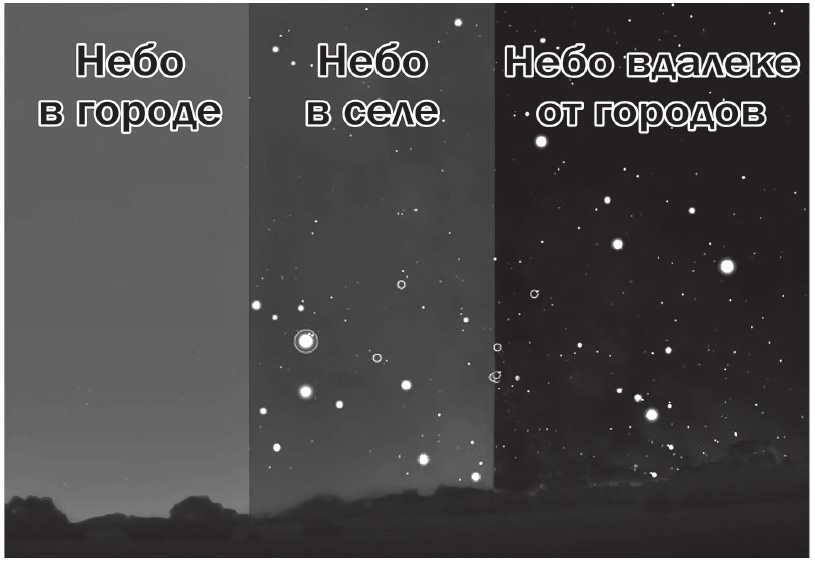

Galaxies traverse the vast expanse of space, and certain galaxies are drawn towards one another. When these galaxies collide, immense gravitational forces are generated. These forces propel certain stars into the void of intergalactic space. It is believed that these celestial bodies originally belonged to smaller clusters, as their gravitational attraction is significantly weaker.
During the collision, some stars can be flung into space, hurtling away at tremendous speeds. The resulting momentum is sufficient to send them into the depths of intergalactic space.
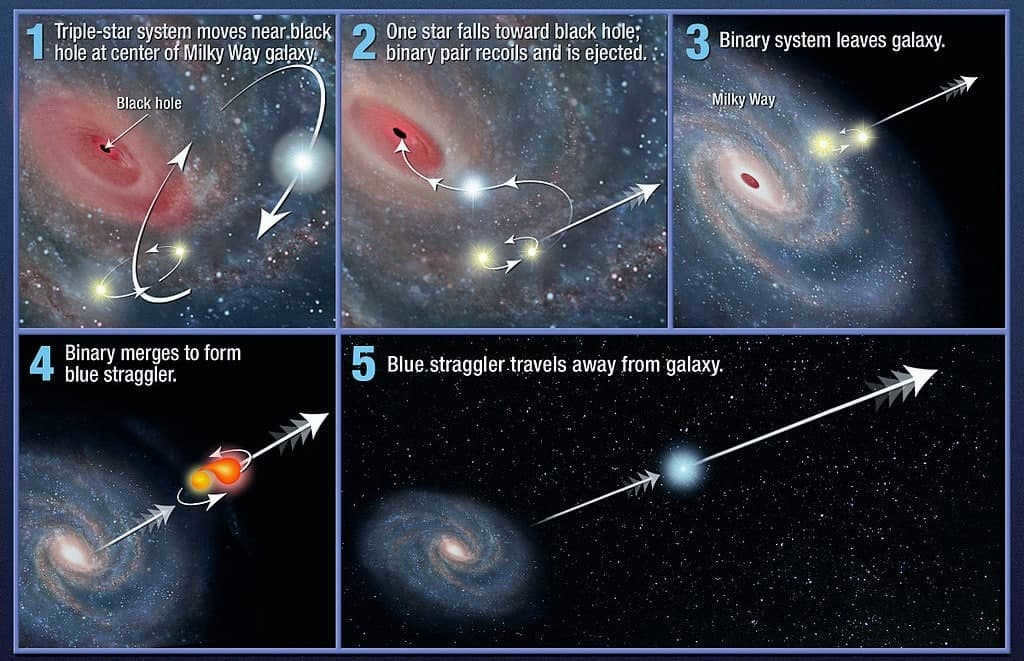
The alternative scenario suggests that interstellar celestial bodies may manifest themselves as a consequence of a binary star’s gravitational pull towards a singularity. As this gravitational interaction unfolds, the two objects draw nearer to one another. Eventually, when the binary star reaches a specific proximity to the singularity, one of the luminous bodies is engulfed by its gravitational force and spirals inward towards the center, while the other escapes past the event horizon and continues its trajectory. It is postulated that the star acquires such an immense amount of momentum that it propels itself away from the black hole at a velocity surpassing the fourth cosmic speed – the minimum velocity necessary for a celestial body to overcome the gravitational pull of a galaxy.
In 2005, astronomers made the remarkable discovery of HE 0437-5439, a massive blue star located an incredible 200,000 light-years away from our Solar System. What makes this star even more fascinating is its astonishing speed, currently clocking in at a mind-boggling 722 km/s as it traverses the vastness of intergalactic space. This makes HE 0437-5439 one of the fastest known celestial objects in existence. Scientists speculate that this blue giant was once part of a binary star system that met its untimely demise by plunging into the gravitational grasp of a supermassive black hole.
If you happen to spot any errors within this text, please feel free to select the problematic fragment and simply press Ctrl+Enter.
Astronomy for kids and novices: celestial maps, binoculars, and telescopes
While enjoying a vacation in remote areas, especially in the southern regions where it gets dark early, we are suddenly captivated by the breathtaking night sky, which is often obscured by city lights and clouds. If your little ones are curious about the constellations that adorn the nocturnal canopy, the book “Amateur Astronomy” will prove to be an invaluable resource. It provides a comprehensive guide to astronomy and offers insights on independent observations.

Effects of Light Pollution
With the increase in street lighting, the ability to observe the stars has become more challenging. In urban areas, only the most luminous stars, planets, and celestial bodies like the Sun and Moon are visible to the naked eye. This is due to the phenomenon known as light pollution. A staggering 60% of Europeans and nearly 80% of North Americans are unable to see the luminous band of the Milky Way, which represents the projection of our Galaxy’s disk in the night sky.
An interesting incident occurred in Los Angeles in 1994 when a massive power outage caused by an earthquake plunged the city into darkness. The police received numerous reports of a peculiar “giant silvery cloud” hovering over the city. It turned out to be the Milky Way, a sight long forgotten in the bright gray night sky of the bustling metropolis.
Nevertheless, there are still regions in Russia where one can witness the breathtaking sight of the Milky Way and the brilliance of 6th magnitude stars. In general, to fully experience the splendor of the night sky, it is advisable to venture at least 20-30 km away from urban areas.
Light pollution levels in the atmosphere
The celestial sphere and maps of the starry sky
The sky appears to us as an immense dome, or more accurately, a sphere. In ancient times, it was believed to be an actual transparent solid sphere (or multiple spheres), and modern astronomers still utilize the term “celestial sphere” to describe the imaginary sphere upon which all visible celestial bodies are projected.
Since ancient times, scientists have divided the sky into constellations, a tradition that originated from the ancient Greeks. Today, the International Astronomical Union has officially divided the sky into 89 areas, each named after a constellation. The names of these constellations are mostly derived from mythology, with slightly over half of them being known since ancient times. The remaining constellations were discovered between the 16th and 19th centuries.
While some constellations are easily recognizable due to the patterns formed by bright stars, others may not contain any visible stars to an inexperienced observer. However, every single area of the sky is part of a constellation, ensuring that the entire sky is covered by these celestial divisions.
While other maps may not include these lines, they do present the demarcations of the constellations (that is, the regions of the sky they encompass), along with celestial coordinates. Additionally, they may feature stars that are fainter than those perceptible to the unaided eye, as well as nebulae, galaxies, and star clusters. These maps are specifically crafted for observation with a telescope or other optical instrument.
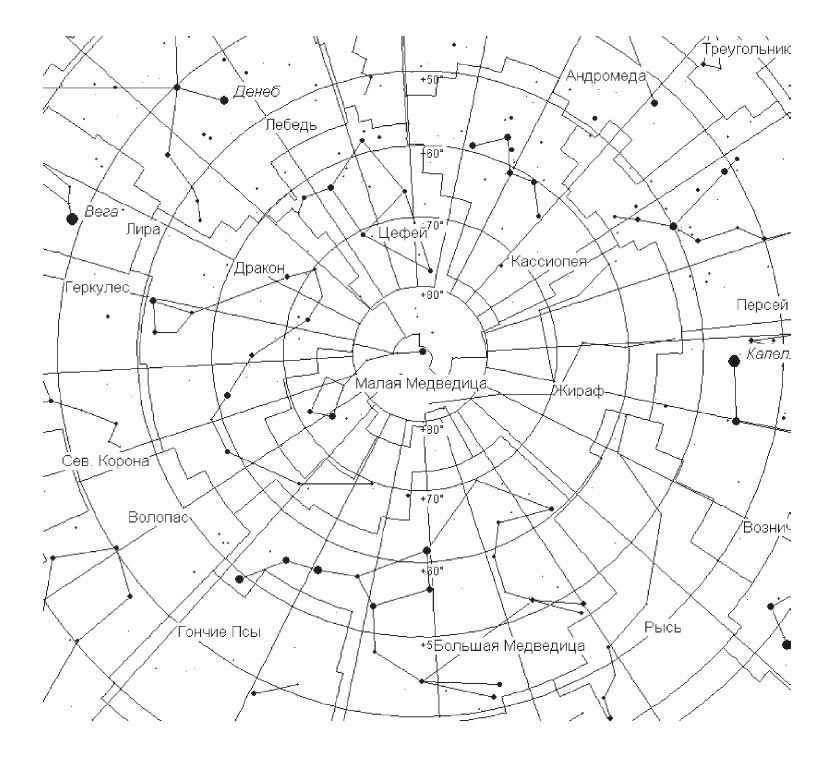
Map of the circumpolar constellations
How to Start Exploring the Constellations
Recognizing constellation patterns among the numerous stars can be challenging for beginners. Additionally, many star maps distort the shapes of constellations due to map projections. However, don’t worry, with time and experience, you will eventually be able to locate and identify them. It may take a few attempts, but one day you will see what you’ve been searching for and wonder how you missed it for so long.
It’s best to follow a specific method when getting acquainted with constellations. Begin with the brightest, most prominent, and well-known ones. These can serve as landmarks and reference points for finding others.
For those living in the Northern Hemisphere, the constellation Big Dipper near the pole can serve as a helpful starting point. In middle latitudes, it never goes below the horizon, and in the evening, its “bucket” of seven stars can be easily located: in the autumn, it is not very high above the northern horizon; in winter, it is higher in the northeastern part of the sky; in spring, it is high up (almost in the zenith for Moscow); in summer, it is in the northwestern direction.
The Big Dipper is a great reference point for locating other stars and constellations. The most well-known method to find Polaris is by extending the outer side of the “bucket”. However, as depicted in the diagram, this remarkable cluster of stars can also be used to locate many other constellations.
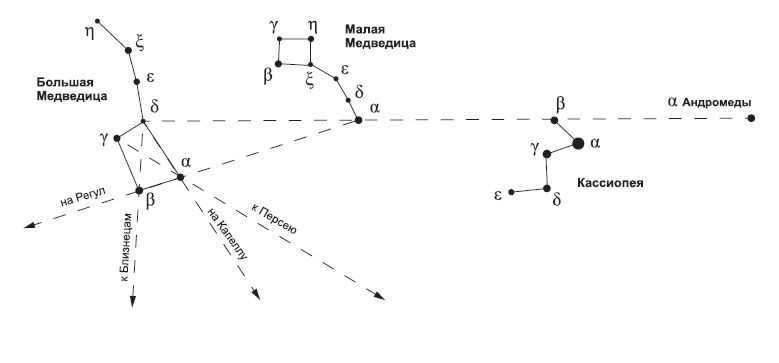
If you start your journey from the famous “bucket” of the Big Dipper, you will be able to locate Polaris, also known as the North Star, and the constellation of the Little Dipper. As you explore this region of the sky, you will also come across other notable constellations such as Draco, Cassiopeia, Cepheus, and Perseus. Once you have familiarized yourself with these nearby constellations, the Big Dipper will guide you towards more distant ones like Leo, Boötes, and Virgo.
The following stage involves identifying the constellations that can be seen in the evening sky in the southern hemisphere during specific seasons. During autumn, the prominent constellations Pegasus and Andromeda catch the eye, which, when combined, bear a resemblance to a larger version of the Big Dipper known as the Bucket. Once these have been identified, one can then search for the constellations Aries and Perseus, followed by the more subtle ones: Pisces, Triangle, and Whale.
The primary constellation visible in the spring sky is Leo, which features the bright star Regulus. Once you have located Leo, it becomes easier to spot other prominent stars such as Arcturus in Boötes and Spica in Virgo. From there, you can begin to search for the dimmer constellations of Cancer, Corvus, Crater, Hydra, Leo Minor, Sextans, and Coma Berenices.
During the summer and fall, three bright stars stand out in the southern part of the sky: Vega, Deneb, and Altair. These stars represent the main stars of the constellations Lyra, Cygnus, and Aquila, respectively. Together, they form the Autumn-Summer Triangle. This is a great starting point for exploring the summer sky and discovering other constellations such as Corona Borealis, Hercules, Ophiuchus, Scorpius, Sagittarius, Capricornus, Aquarius, Vulpecula, Delphinus, Sagitta, and Scutum.
Online star charts are available on the internet that display the current and historical views of the night sky, as well as future projections.
Astronomical Observation Tools
For astronomy enthusiasts who want to go beyond books and maps to explore the cosmos, optical instruments are a must.
If you’re new to astronomy and have no previous observation experience, binoculars are a great first instrument. They’re lighter and more portable than telescopes, making them ideal for general sky viewing, observing the Milky Way, bright nebulae and star clusters, and examining the moon’s surface in detail. Binoculars can also be used to observe comets.
When purchasing binoculars, it is important to consider the aperture (lens diameter) and magnification. For instance, binoculars labeled 6×50 have an aperture of 50 mm and a magnification of 6x. There are larger binoculars available with higher magnification, such as 20×100, but these cannot be used by hand due to their heavy weight and resulting image shake. To use such bulky instruments, a tripod is necessary. The optimal binocular parameters for sky surveys and handheld observations are 7×50 or 8×56.
Of course, a truly dedicated amateur will likely not be satisfied with just one pair of binoculars and will naturally progress to using a telescope as their next step.
Amateur telescopes typically fall into two main categories – refractors and reflectors – which have been around the longest. When selecting a telescope, it’s important to have a clear understanding of your expectations and what the telescope can realistically deliver, just like when choosing binoculars. It’s worth noting that even a large telescope won’t be able to capture the same level of detail as the images taken by the “Hubble” telescope.
Additionally, consider your observing location. If you live in an area with high light pollution, a bulky telescope with a large aperture may not reveal its full potential when used on a balcony. It may also be challenging to transport such a telescope out of town. In contrast, a more compact telescope would be easier to handle and transport.
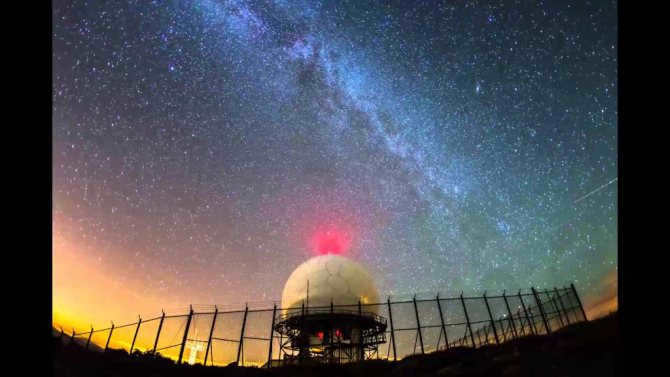

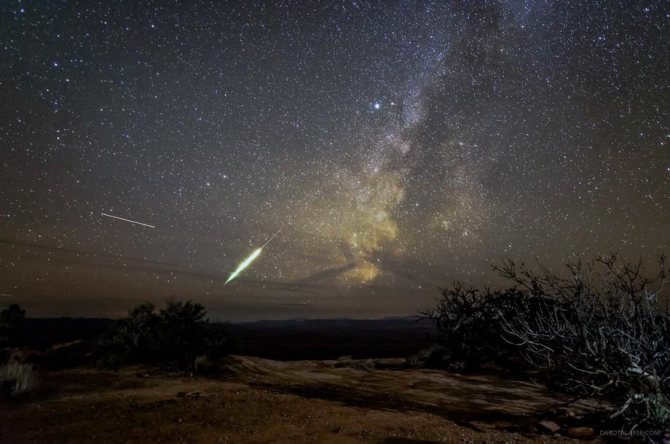



The heavens have forever captivated the interest of individuals involved in the arts. However, the star map held the greatest significance for explorers who relied on celestial bodies to navigate their course. The primary point of reference is Polaris, which remains constant in its position. In order to avoid getting lost in unfamiliar territory, one must know how to locate Polaris.
Which constellation does Polaris belong to?
Polaris is situated in the handle of the Little Bear constellation and is positioned towards the north with a slight variation. It emits a brighter light compared to other celestial bodies, making it more easily visible. The Little Dipper consists of 29 celestial objects, with only 7 being readily visible to the naked eye. This constellation is also a smaller version of the Big Dipper, which contains 56 objects, not all of which can be seen without a telescope. To accurately determine the direction pointed by the constellation, one must know how to locate Polaris.
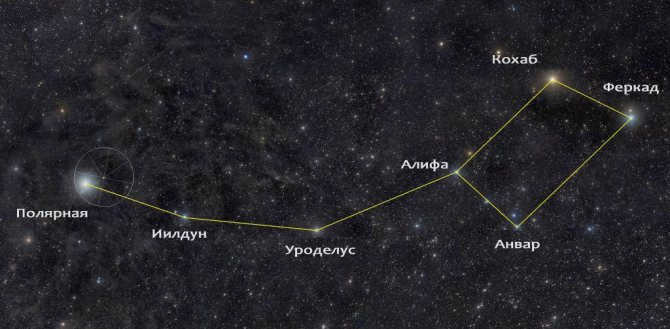
Position of constellations at different times of the year
How can we use the stars of different constellations for navigation? They can also assist us in determining the correct direction. Astronomers observe the changing positions of constellations, not only during the night but also throughout the year.
At midnight, when facing south, the following constellations will be visible:
- Canis Major and Canis Minor (January);
- Leo (March);
- Capricornus (May);
- Taurus (November);
- Orion (December).
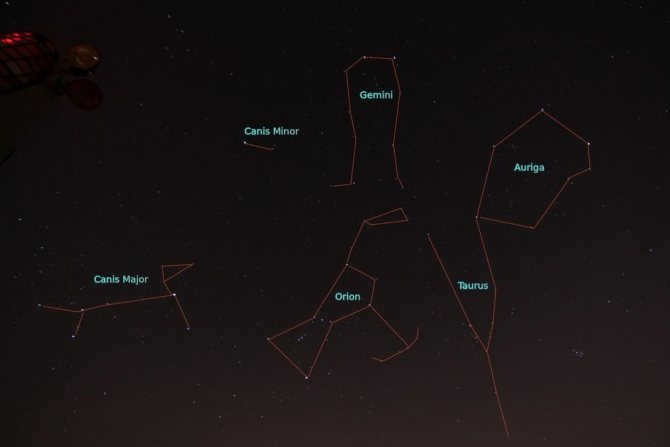
The Milky Way, our galaxy, can be observed in the northern sky from the southern direction and can sometimes function as a reliable safety measure.
Distinctive Features of Polaris
Not many individuals are aware of the fact that this celestial object is quite extraordinary. In terms of size, Polaris is extremely large, surpassing even the Sun. Its temperature is considerably higher than that of the Sun, making it brighter and more massive. In reality, it is a triple star system, although such intricacies cannot be discerned with the naked eye. Three enormous stars in the Earth’s atmosphere appear as a single celestial body.
It has been established that Polaris, which belongs to the Cepheus delta type, is not only the brightest but also the closest pulsating variable star to Earth. Astronomers classify the luminosity of stars in this way. Researchers propose that Polaris and the neighboring stars are the remnants of a dispersed star cluster with a low number of stars. However, it is important to note that Polaris cannot be considered the brightest star in the sky as there are numerous other stars that are brighter and larger. Polaris appears relatively small and dim in comparison to these stars.
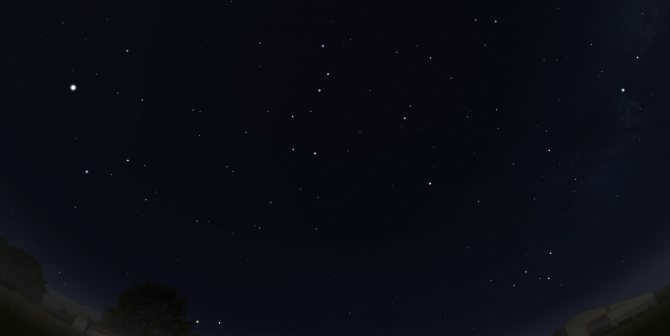
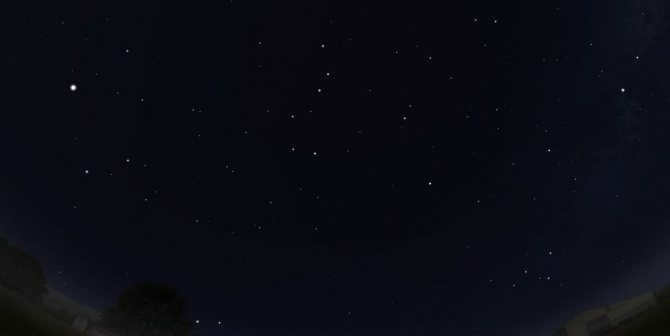
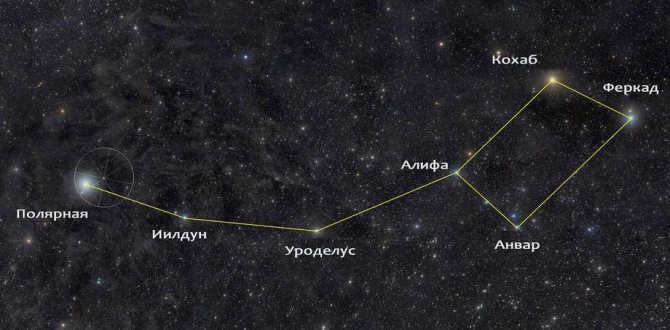
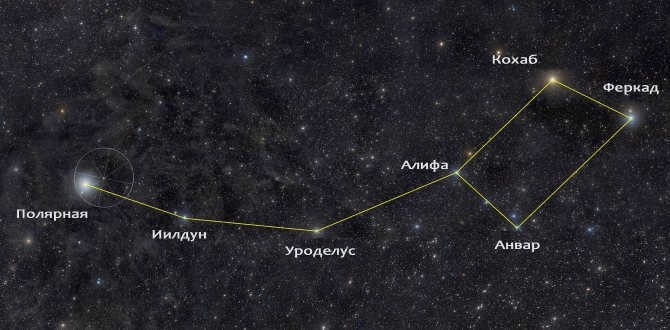

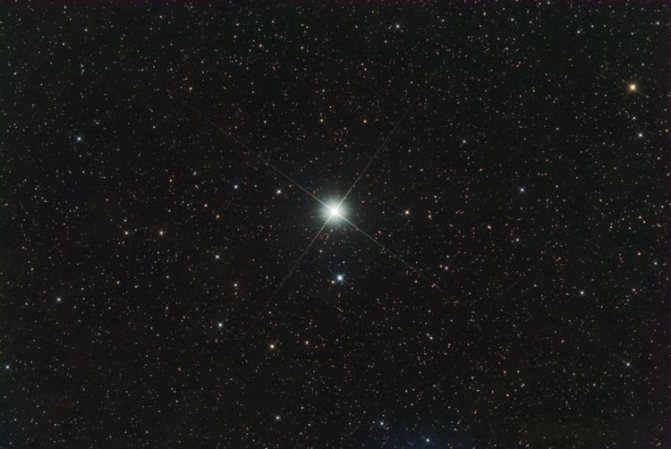
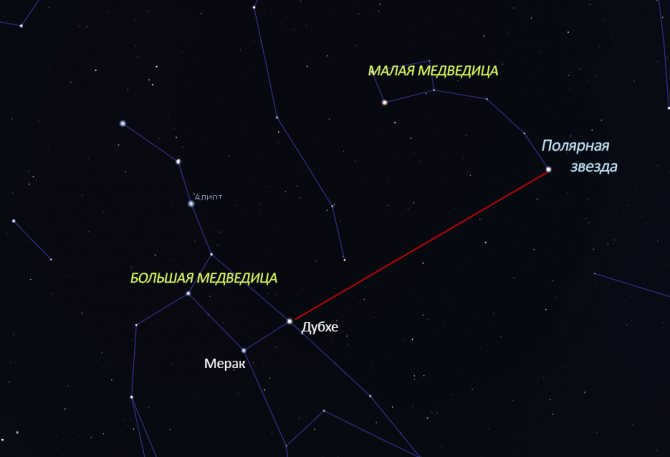
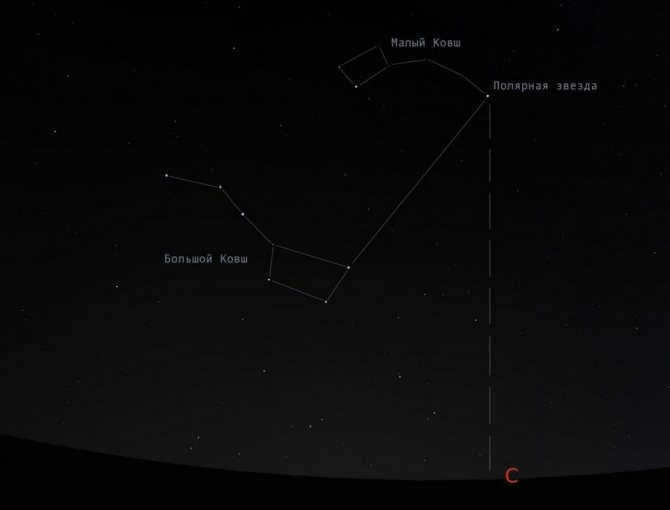
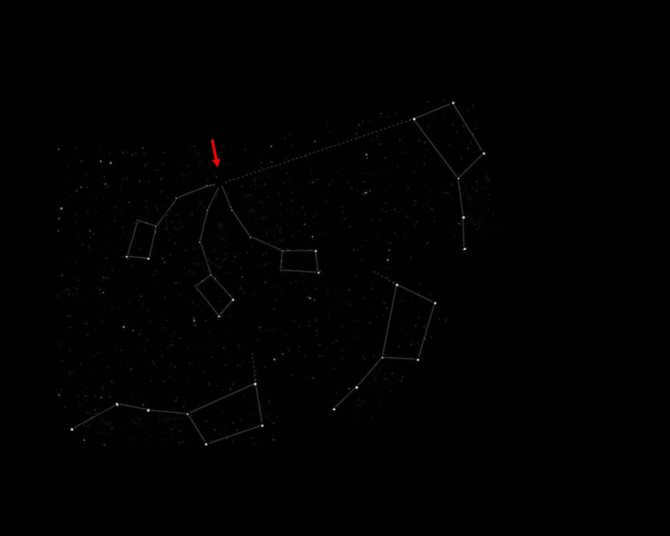
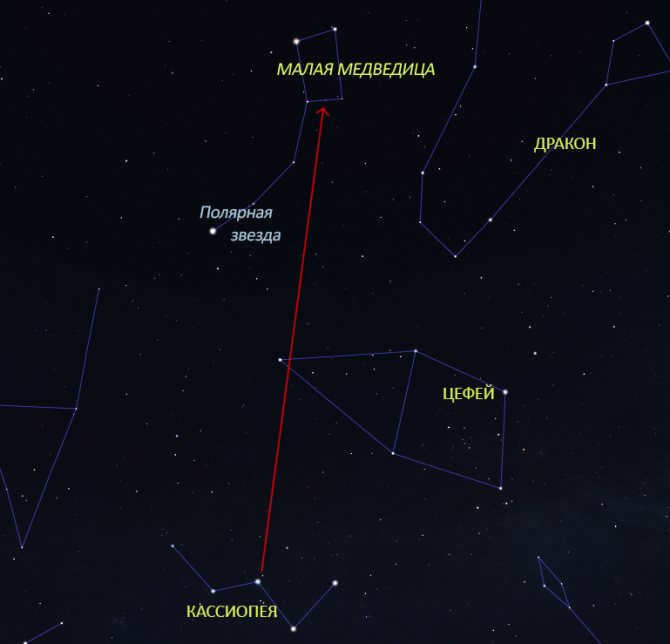
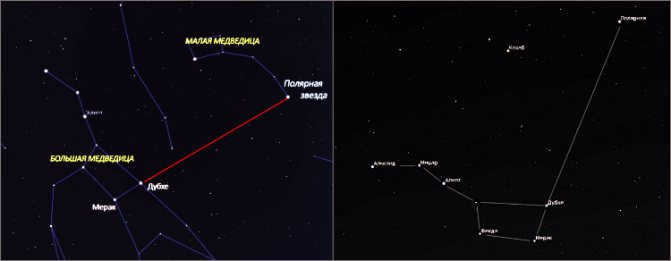
This iconic structure serves as a helpful indicator of one’s orientation in relation to the cardinal directions. If an individual is facing the celestial body, it can be inferred that their path lies to the north, while the southern direction remains behind them. Many individuals rely on this celestial body to discern their geographic latitude. To do so, one must possess a protractor and a plumb line. The central mark of the protractor is aligned with the celestial body, while the plumb line is suspended from its center. The resulting angle should be subtracted by 90 degrees, yielding the desired latitude. Armed with the knowledge of locating Polaris, individuals can accurately determine their precise position.

Effortless methods to locate the star
Astronomy was only casually covered in most people’s school curriculum. As a result, not everyone is aware of the techniques to locate Polaris in the night sky. However, there are a few simple approaches that can be employed without the need for any specialized equipment.
Located near the Big and Little Dipper
The most straightforward method of locating Polaris in the nighttime sky is to locate the adjacent constellation, the Big Dipper. Understanding the correct sequence of steps can help explain why this is necessary. The process involves the following steps:
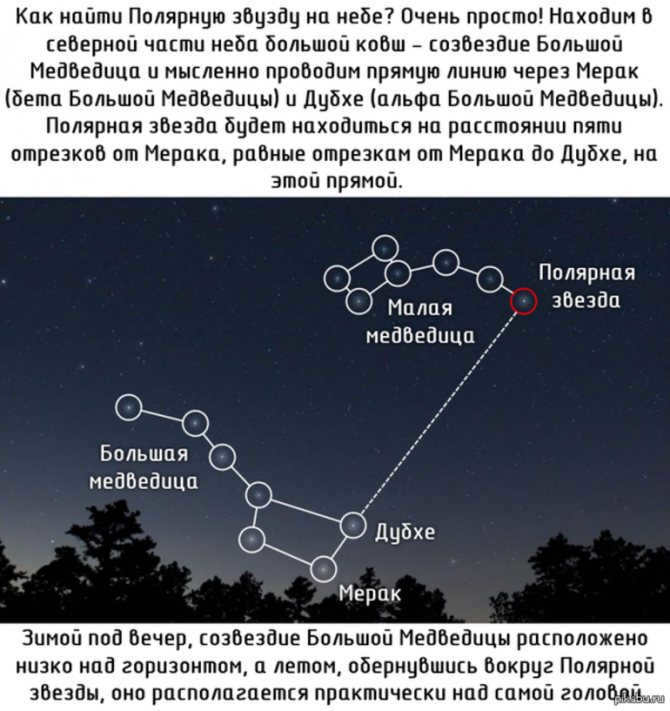
- Take a close look at the star clusters and search for a shape resembling a large ladle with a long handle. The right side of this “container” will be slightly narrower than the left side.
- Mentally connect the two rightmost points (stars Dubhe and Merak) with a line.
- Increase the resulting segment by 5 times and combine it with the existing one.
- The end of the longer line will indicate the edge of the handle of the other dipper – the Little Dipper.
- This is the exact spot where Polaris will be situated.
Using a Map to Determine the Location of Alpha of the Little Bear
To locate Alpha of the Little Bear relative to the horizon, you will need to utilize a regular city map. These maps can be easily purchased from any newsstand at an affordable price.
It is crucial that the map includes a scale and the names of major landmarks.
Steps to Follow:
- First, consult reference materials to determine the altitude of Polaris above the horizon (this will vary depending on the time of year and the latitude of your location).
- Identify a prominent linear feature (such as a road or a large building) and locate it on the city map.
- Next, unfold the map and align it with the selected position on the ground.
- Following that, they identify the object (such as a building, body of water, plaza, TV tower, etc.) that is situated at the focal point of the upper section of the map.
- They then direct their attention to it and mentally ascend.
- Once they reach a specific elevation, they locate the Alpha star of the constellation Ursa Minor, which appears as a faint, diminutive point of light.
Unfamiliarity with the cardinal directions
Many times, individuals find themselves disoriented in unfamiliar terrain, unsure of which direction to take. In such situations, it is helpful to lift one’s gaze towards the stars and utilize their positions to navigate. The celestial objects in the night sky can serve as a guide, allowing one to determine the cardinal directions and ultimately find their way back home.
Actions to be taken:
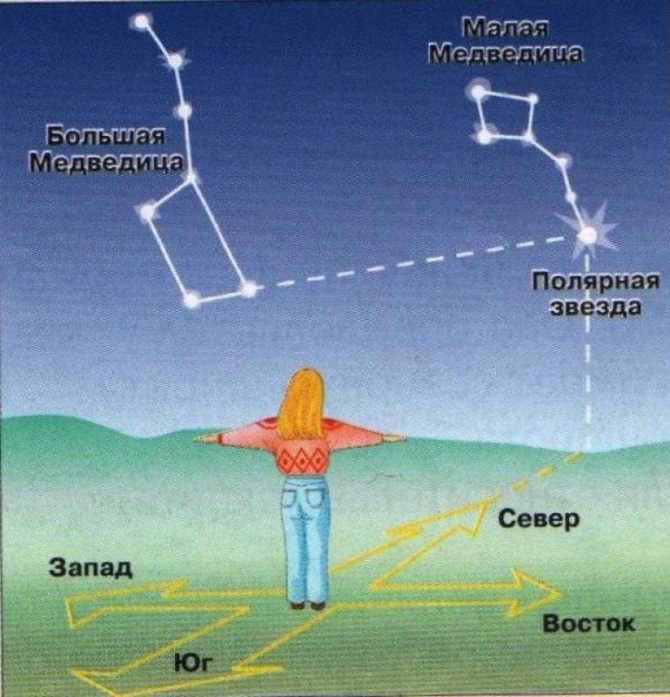
- Grab two sticks, with one of them being slightly longer than the other.
- Insert the sticks into the ground, positioning the longer one slightly ahead.
- Lie down and ensure there is a straight line formed between the stick and your line of sight.
- Once any celestial object comes into view, observe its movement for a few minutes.
- The North direction will be to the left of the object’s movement.
- Stand up and search for a group of stars in the North that resembles a small ladle.
- Mentally trace a curved line connecting the two rightmost points of the ladle.
- Next, draw five similar segments upwards and locate the desired object.
Using a ruler
Kinosura, a star in the Little Bear constellation, can be located by utilizing a common school tool – a ruler. To accomplish this, a series of straightforward steps must be taken. These steps include:
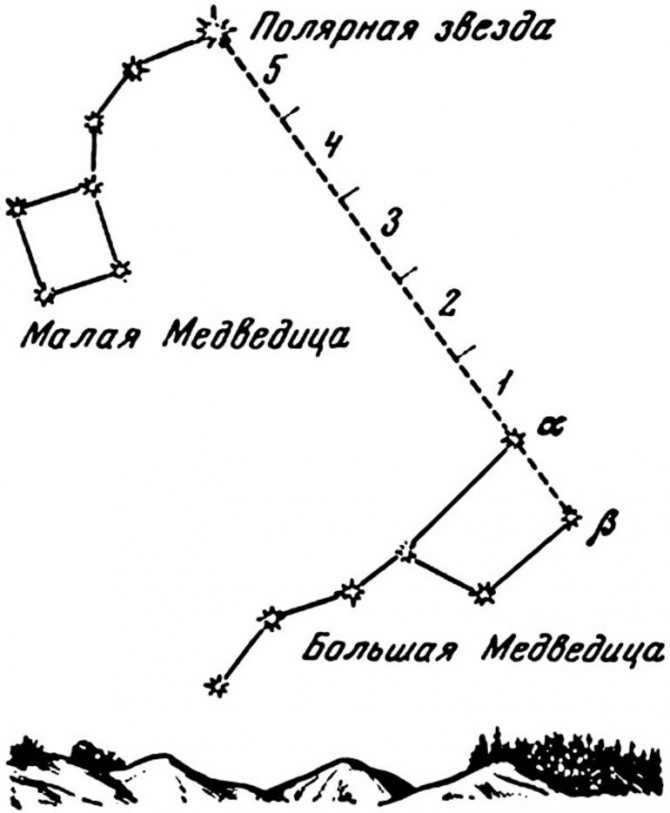

- Find the latitude of the region where the star search is being conducted.
- Next, determine the position of the north using any available method.
- Afterwards, take a ruler and move it away from your eyes at a distance of 57 cm.
- Align the zero mark on the school equipment with the horizon line.
- Move back upwards by 40.5 cm. If everything is done correctly, you will be able to see the Alpha of the Little Bear in this position.
Using various constellations for guidance
Locating specific stars in the night sky can be facilitated by referencing the positions of different constellations. These expansive groupings of stars are relatively simple to locate, making them accessible even to novice stargazers.
Methods for identifying stars through various constellations:

- Cassiopeia. Before locating Kinosura, it is important to locate the most luminous star of Cassiopeia – Rukbach. Additionally, determine the position of Mitnar in the constellation of Ursa Major. These celestial objects are connected by an imaginary line that will pass through Polaris. In this case, Polaris will be positioned in the middle of the line segment.
- Swan. In order to ascertain the whereabouts of Kinosura, it is necessary to draw a line passing through Epsilon of the Swan (Jenach) and Deneb. On this line, mark a distance that is twice the length of the segment between the aforementioned objects. As a result of these actions, the end of the line will indicate the region of the sky in which the brightest star, Polaris, can be found.
If you possess a compass
If you happen to have a compass in your possession, locating Kinosura won’t be a difficult task. By utilizing it, one can easily determine the desired direction to proceed, thus leading the lost individual out of the forest. It is important to note that the north can be identified by Polaris, while the south can be determined by turning 180 degrees. In order to move towards the east, simply shift to the right, and to head towards the west, move towards the left.
Step-by-step instructions:
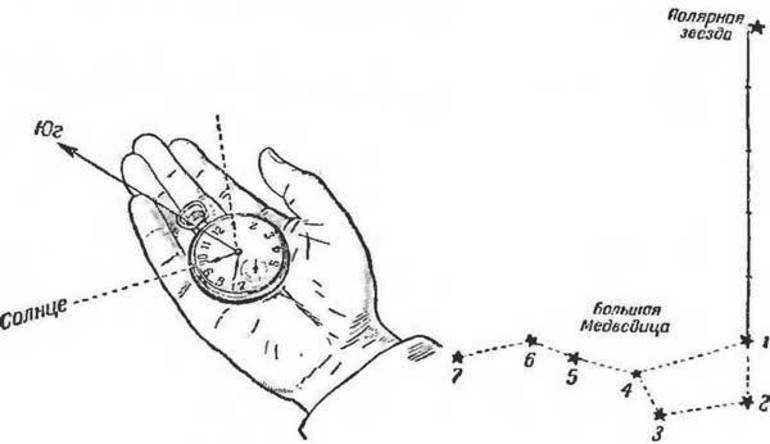
- To find the north, utilize a compass. It is important to perform this task in an area that is free from railroad tracks, power lines, and vehicles, as these can interfere with the accuracy of the compass readings.
- Adjustments need to be made to the collected data due to the disparity between the magnetic and geographic poles.
- Once the accurate north direction has been determined, commence the search for Polaris. There are various methods available for this purpose.
Ancient myths and legends
From ancient times, a plethora of myths and legends have been passed down to us. According to Arab tribes, the luminous point in the sky is believed to be a coffin, the final resting place of a celestial warrior. In contrast, Indians believe it to be a young boy, devoutly praying to the gods and oblivious to the world around him. It is important to note that it was the ancient inhabitants of our planet who bestowed such unique and enchanting names upon the celestial bodies. Even in those ancient times, people possessed the knowledge to locate Polaris in the sky using the Big Dipper.
Method 1: Locating Polaris Using the Big Dipper
To locate Polaris using the Big Dipper, you must first locate the group of stars that form the “bucket” of the constellation and the two stars that make up its “outer wall” opposite the “handle”. The lower star is called Merak, while the upper star is called Dubhe. Next, draw a line from Merak through Dubhe, which will outline the “wall of the bucket”. Along this line, at a distance of five sections between Merak and Dubhe, you will find Polaris. Polaris stands out among the surrounding objects with its brighter light.
A diagram illustrating this process is shown below, overlaid on a photo of the starry sky:
Locating the Star
After becoming acquainted with the facts and characteristics of the celestial object, you can start learning about the various methods to locate it. The most well-known and widely used method is to locate the star by its neighboring constellations. Some individuals prefer using lesser-known techniques such as a map or compass.
There may be times when you are unable to see the cluster of celestial bodies where the star is situated, and many people are puzzled on how to find Polaris. To address this, let’s examine a few examples of how to locate this landmark.
By utilizing alternative star formations
Locating Polaris solely through the Big Dipper is not always feasible. The Big Dipper is a sizable constellation, and certain points may be obscured by clouds, making them unobservable. In such instances, one can rely on other groupings of celestial bodies in the nocturnal expanse. These constellations encompass:
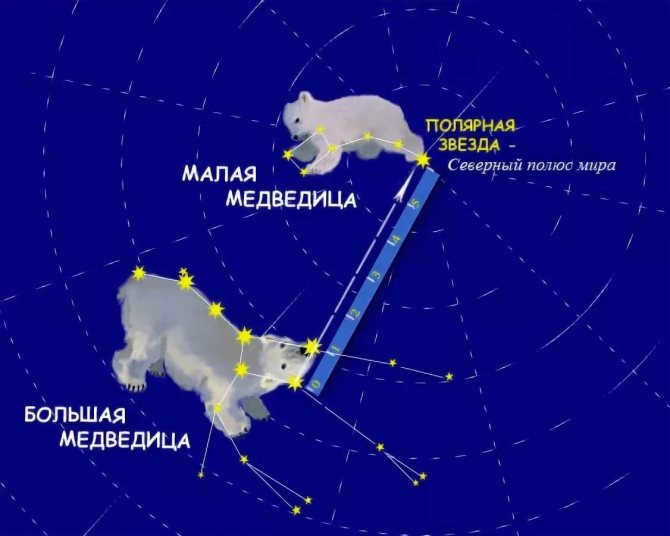
- Cassiopeia. The center of this constellation, known as Rukbach, is connected to the second-to-last star of the handle of the Big Dipper. Then, the midpoint of the resulting line segment is mentally located. This point will correspond to Polaris.
- Swan. Two specific stars in this constellation, Jenach and Deneb, are identified. A line is drawn passing through these stars, and a distance equal to twice the distance between them is marked on this line. Not far from this point will be the location of Polaris.
- Orion. In this constellation, a line is visually drawn from the middle star, Alnilam, through Meissa. The length of this line segment is mentally noted. The line is then extended further to the star Capella in the constellation of Ascendant. The distance between Alnilam and Meissa is measured on this line. Polaris will be found at the end of this line segment.
Mastering the art of determining Polaris’ position using these three techniques can be quite challenging, as it will require a certain level of expertise.


The celestial sphere has always been a captivating subject for those involved in the world of art. However, its significance extends beyond aesthetics, particularly for travelers who rely on star charts to navigate their way. Among all the celestial bodies, Polaris holds a special place as a constant point of reference. Mastering the skill of locating Polaris is crucial for avoiding getting lost in unfamiliar territories.
Which constellation does Polaris belong to?
Polaris can be found in the handle of the Little Bear constellation, slightly deviating towards the north. It shines brighter than other stars, making it more noticeable. The Little Dipper contains a total of 29 celestial bodies, but only 7 are easily visible to the naked eye. This constellation is a smaller version of the Big Dipper, which consists of 56 objects, not all of which can be seen without a telescope. To accurately determine the direction of a constellation, one must know how to locate Polaris.
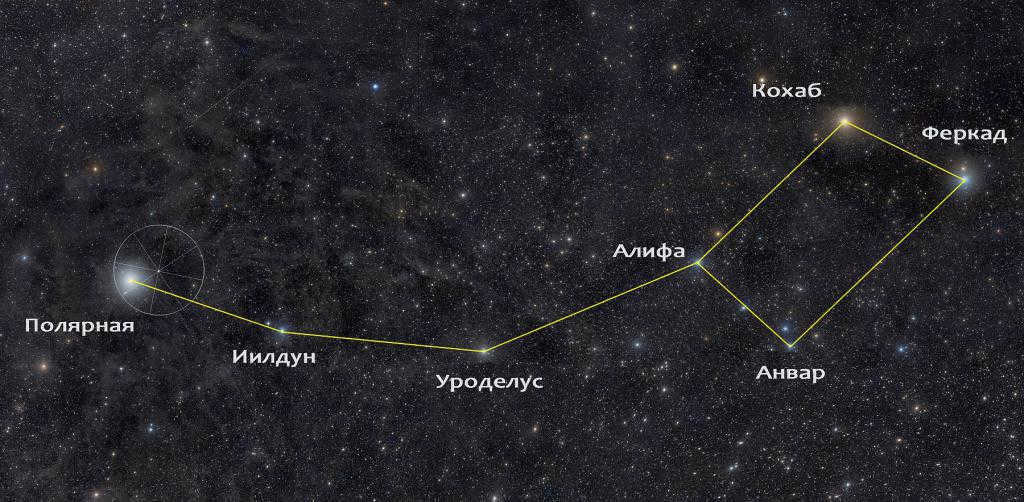
Distinctive Features of Polaris
Not many individuals are aware of the fact that this celestial entity possesses remarkable characteristics. In terms of size, Polaris surpasses all expectations, even overshadowing the Sun. Its temperature greatly exceeds that of our star, making it more radiant and weighty. Interestingly, Polaris is actually a trinary star system, although this intricacy is indistinguishable to the naked eye. The three colossal stars in the Earth’s atmosphere merge together, creating a single brilliant entity.
It has been established that Polaris is not only the brightest but also the closest pulsating variable star of the delta Cepheus type in proximity to Earth. This is the way in which astronomers classify its luminosity. Researchers propose that Polaris, along with the stars in its vicinity, constitute the remnants of a dispersed cluster with low density. Having said that, it would be inaccurate to claim that Polaris is the most brilliant star visible in the night sky. There are numerous other celestial bodies that are brighter and larger in size. In comparison to these luminaries, Polaris appears relatively inconspicuous.
What is the role of Polaris?
Polaris serves as a significant landmark that can indicate a specific direction in the world. When facing this star, one can confidently determine that their path leads to the north, while the southern side remains behind. Additionally, many individuals utilize Polaris to determine their geographic latitude. To do so, one needs a protractor and a plumb bob. The protractor is placed directly on the star’s position, with the plumb bob fixed at its center. The resulting angle should be subtracted by 90 degrees, providing the desired latitude. By understanding how to locate Polaris, individuals gain the ability to accurately pinpoint their exact location.

Ancient myths
From ancient times, there have been numerous legends and beliefs that have been passed down to us. According to Arab tribes, this bright point in the sky is believed to be a celestial warrior’s coffin. Conversely, the Indians believed it to be a young boy praying to the gods, oblivious to everything else. However, it’s important to note that it was the ancient inhabitants of our planet who bestowed these celestial bodies with such unique and beautiful names. Even back then, people knew precisely how to locate Polaris in the sky using the Big Dipper.
Locating the Star
Once you have familiarized yourself with the star’s facts and characteristics, you can start exploring different methods to locate it. The most popular and well-known approach is to locate the star by identifying nearby constellations. Alternatively, some individuals prefer using lesser-known techniques such as using a map or compass.
At times, you may not be able to spot the cluster of celestial bodies that the star resides in, leaving many people puzzled about how to find Polaris. To address this, let’s examine a few examples of how to locate this significant landmark.
5 methods to locate Polaris in the celestial sphere
Let’s explore different approaches to finding Polaris in the sky using the Big Dipper as a guide. Firstly, it is crucial to accurately identify the position of the Big Dipper itself and take note of the two primary stars forming its base. The lower star is called Merak, while the one slightly above it is known as Dubhe. Next, a straight line is drawn from the top to the bottom, spanning five times the distance between the two stars. At the terminus of this line, Polaris will be situated. In case there is any uncertainty about the accuracy of the determination, it is advisable to compare the celestial body with other stars, as Polaris will be the most luminous one.
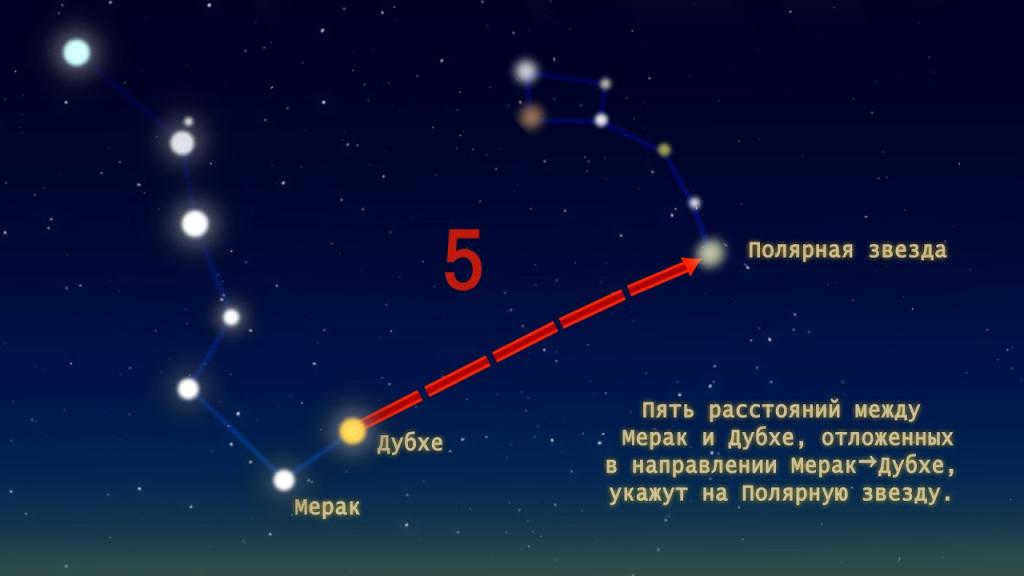
To start, you need to orient the compass in such a way that its arrow is pointing directly north, taking into consideration a slight deviation in readings due to magnetic declination. In order to figure out how to locate Polaris in the sky, it is important to ensure that the area where you are working does not have any large metal objects, as their presence can interfere with the accuracy of the determination. For instance, if the magnetic declination is towards the west, let’s say 15 degrees, then you should add this value to the reading – that will be your target.
To determine the position of Polaris in the sky, one needs to be on a linear landmark that can be used to establish their own location on the map. It is important to align the map accurately with its location and direction, ensuring that the top of the map is pointing towards the desired star. Next, the individual must ascertain the latitude of their current location and the elevation of Polaris above the horizon.
Cassiopeia is positioned opposite the Big Dipper, making it easy to locate Polaris in the sky. Simply connect the midpoint of Cassiopeia with the second-to-last point on the tail of the Big Dipper. The midpoint of this line segment will indicate the position of Polaris.
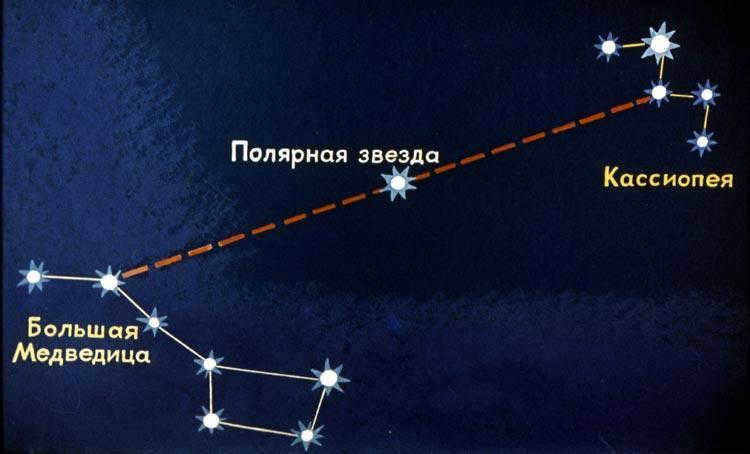
This technique is extremely straightforward, just like locating the desired star on the Big Dipper. However, there are instances where the Big Dipper is partially obstructed by the horizon and cannot assist in the search. In such cases, Cassiopeia comes to mind.
If the northern portion of the sky is obscured by clouds and it becomes challenging to determine the positions of the celestial bodies, then turning to the constellation Orion and its principal figure – Capella – is worthwhile. To do this, it is also necessary to draw a straight line from the middle star, intersecting with Meissa. From Capella, measure the distance to Meissa and use it as an approximation to determine the location of Polaris.

Each of the methods mentioned above is straightforward and precise. By employing any of these techniques, you can effortlessly ascertain the whereabouts of the solitary celestial body known as Polaris.






Welcome, esteemed visitors of our Homie-Art research station! Our team cordially invites you to embark on a captivating journey through the celestial realms, where we will explore the wondrous constellations of the Northern Hemisphere, learn how to locate them in the nocturnal expanse, discover the planets visible from our humble Earth, and uncover the secrets of their celestial movements. Join us as we delve into the realm of constellations, revealing their names and significance. We shall enlighten and astound you with our knowledge and visual aids.
Find a comfortable position to avoid neck stiffness. It’s going to be an intriguing experience. And… let’s embark on a journey to the vast expanse of space!
A concise itinerary of the expedition:
- Understanding the concept of constellations;
- Exploring the constellations of the Northern Hemisphere;
- Discovering what lies near the Big Dipper;
- Unveiling more constellations of the Northern Hemisphere: locating the Andromeda Nebula and other galaxies;
- Delving into the mysteries of the Orion constellation;
- Exploring the constellations of Lyra, Swan, and beyond;
- Unraveling the wonders of the Magus, the Northern Crown, and Hercules constellations;
What is the meaning of a constellation?
A constellation is a term used to describe a collection of stars that are grouped together in the sky for the purpose of easy identification and navigation in various fields of study, such as astronomy and astrology. Each constellation has its own unique pattern and occupies a specific area in the sky. It is important to note that the stars within a constellation are not actually physically connected to each other and can be located at different distances from our planet in three-dimensional space. However, when viewed from Earth in two dimensions, these stars appear close together and form a distinct pattern or group.
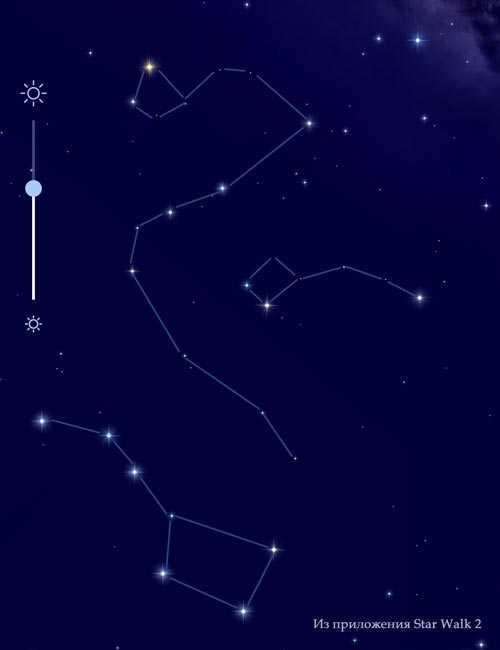
Each constellation and its component stars are given unique names. Many of them are derived from mythology, such as Cassiopeia, Ursa Major, Volopassus, and Andromeda, among others. Some star groups were named more recently and have more modern designations, such as Compass, Northern Crown, and Southern Cross. The zodiac constellations have been known since ancient times, totaling 88 in all.
The observation of the night sky has been a long-standing practice for humans. Throughout history, the scattering of stars against the backdrop of cosmic darkness has always captured attention, albeit in different ways and at different times. However, it is paradoxical that despite this long history, we currently have limited knowledge about them. Why is it that many people are unfamiliar with navigating the night sky and only recognize the Big Dipper and Polaris?
Indeed, due to obvious circumstances, individuals residing in urban areas are deprived of the opportunity to frequently gaze upwards and marvel at the celestial wonders. The illuminating city lights render such an endeavor practically unattainable. Nevertheless, there exists the prospect of embarking on excursions to rural regions. And when the weather conditions permit, an abundance of celestial spectacles awaits! Let us now delve into the realm of constellations present in the northern hemisphere, specifically those that grace the nocturnal skies.

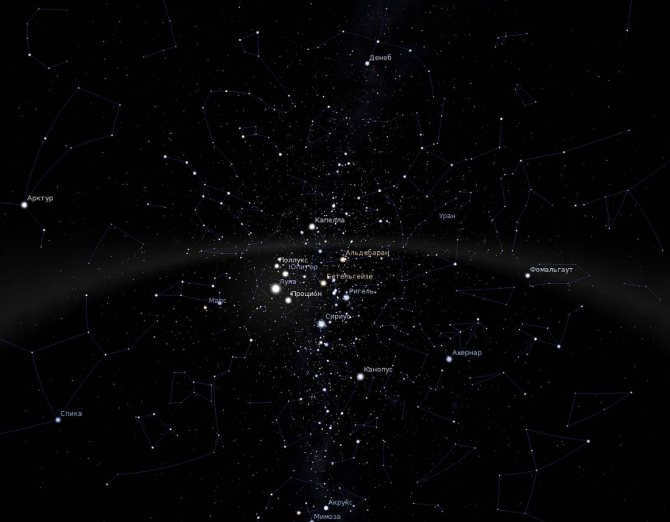
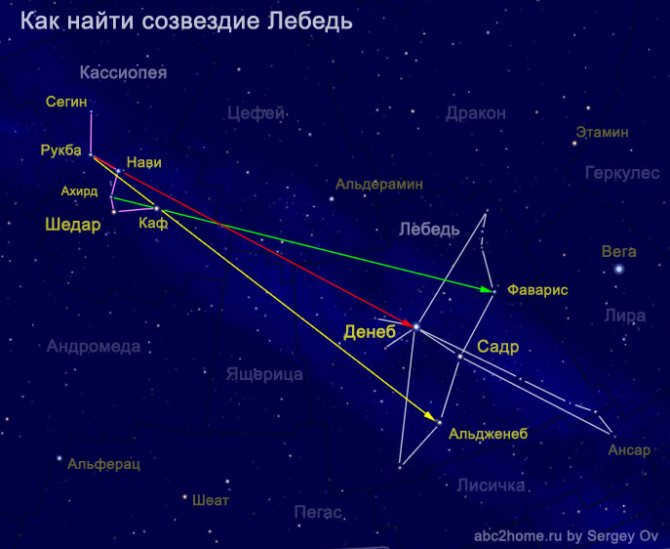
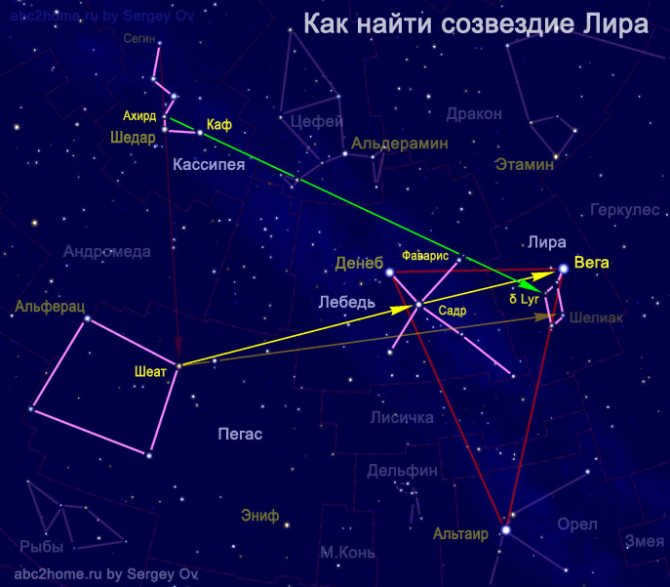
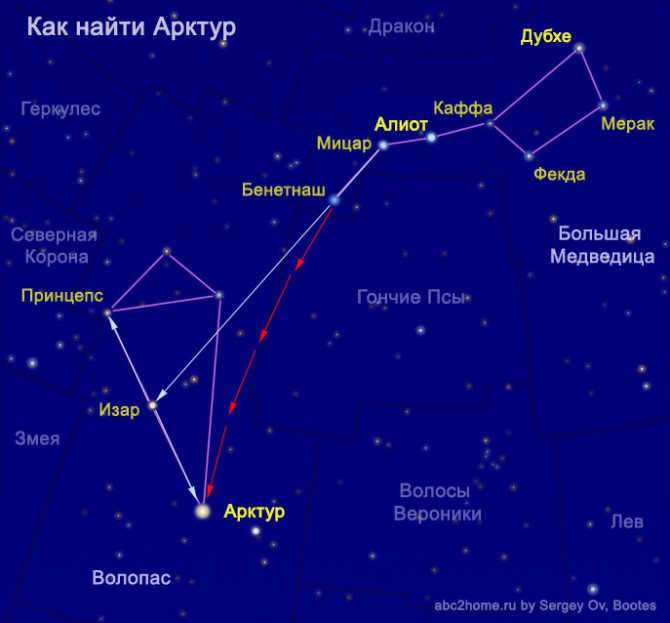
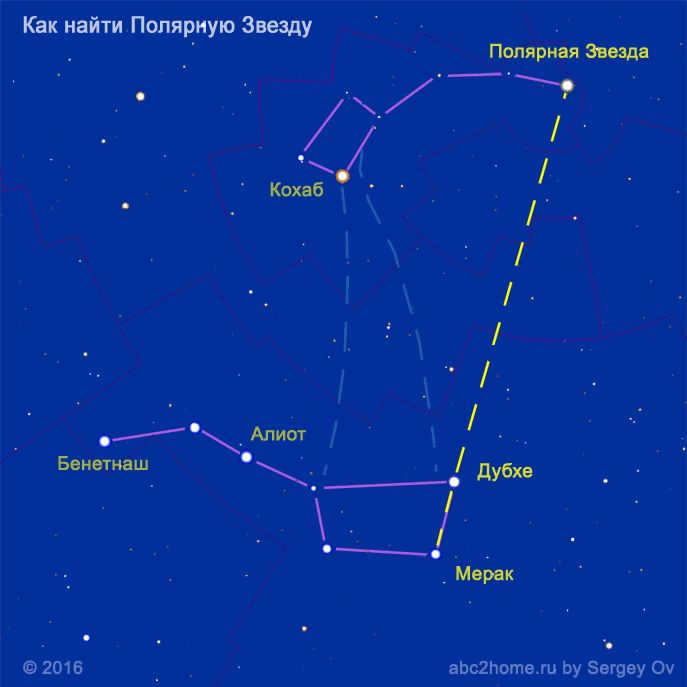

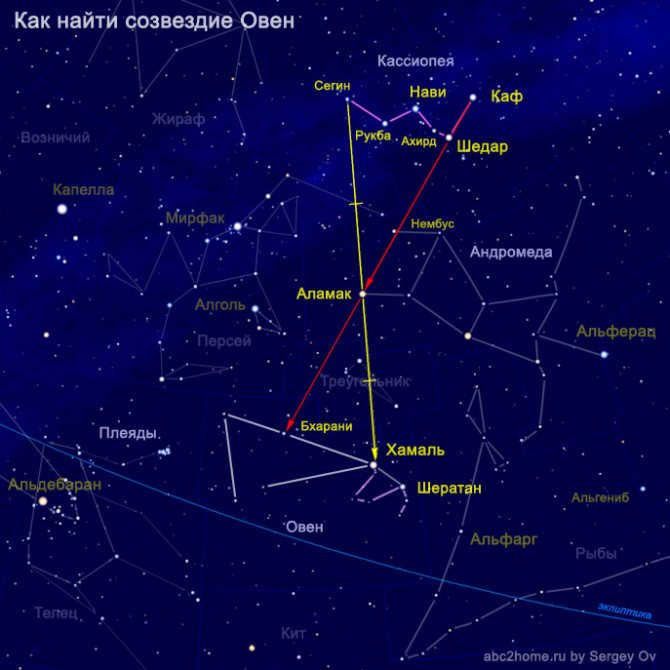
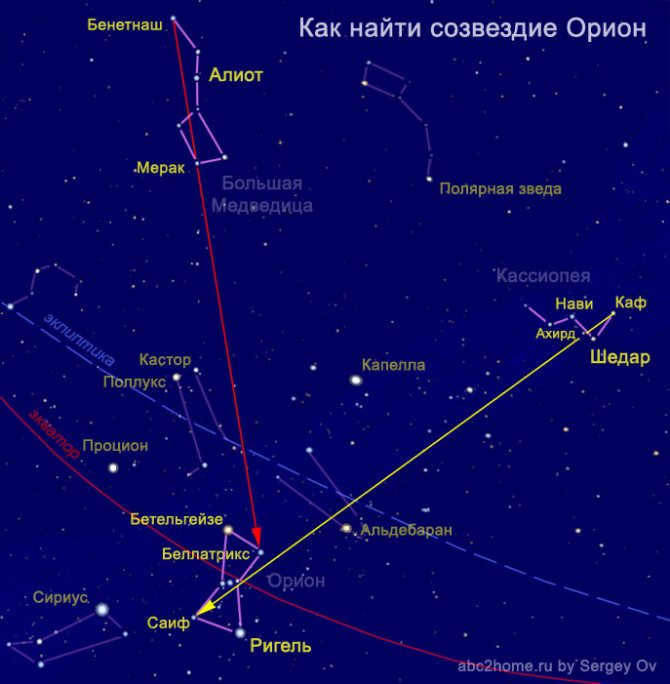
There are currently a total of 88 constellations. Many of these constellations are quite notable, such as Orion, Cassiopeia, and the Bears, and they contain a multitude of fascinating objects that are accessible not only to professional astronomers and enthusiasts, but also to the general public. Within this section, we will provide information on the most intriguing objects within these constellations, including their locations, as well as a plethora of photographs and captivating video recordings.
| Constellations categorized by seasons | |
| Spring | March-April-May |
| Summer | June-July-August |
| Autumn | September-October-November |
| Winter | December-January-February |
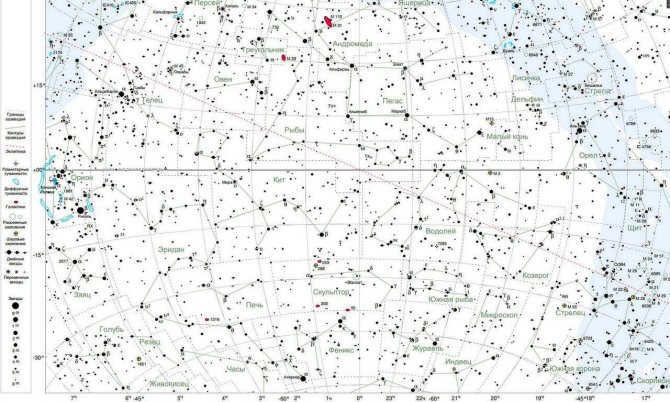
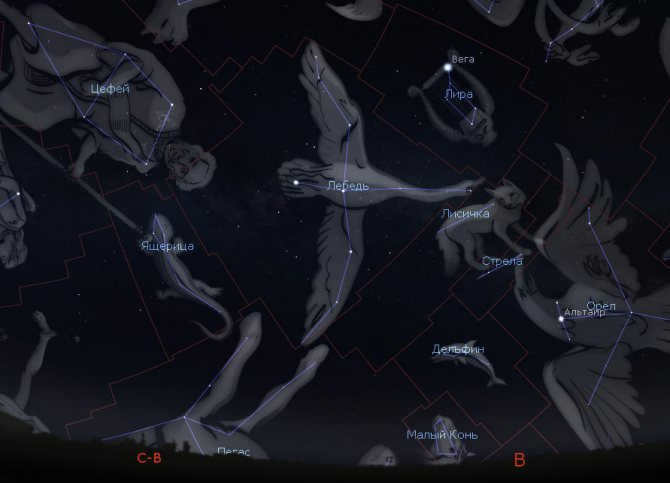
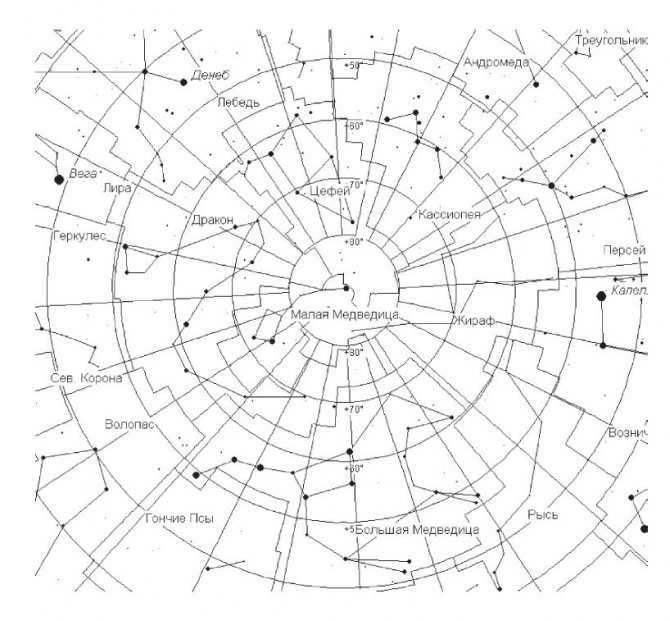
Constellations in the north hemisphere
The night sky, like the Earth, can be divided into eastern and western hemispheres. It can also be divided into northern and southern hemispheres, as well as the equatorial part. In this case, we are focusing on the northern hemisphere.
The constellations in the northern hemisphere are only visible to people located on the northern side of the equator. Those in the southern hemisphere cannot see them, as the Earth remains stationary in relation to the rest of the stars on a universal scale.
There are certain constellations in the northern hemisphere that can always be seen. These constellations are located near the polar star, which serves as a guide to the North Pole. The constellations that fall into this category include the Big and Little Bears, Andromeda, Cassiopeia, the Dragon, Cepheus, Lynx, and the Hounds.
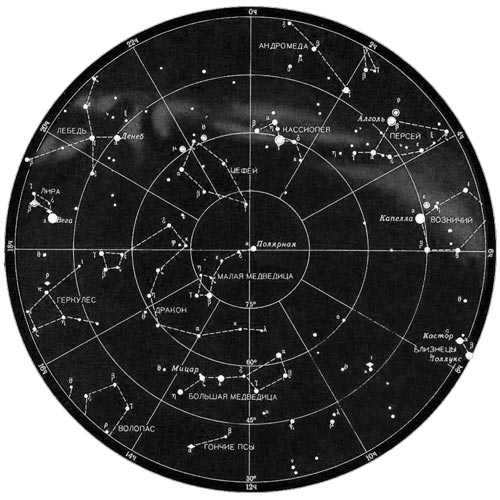
Different constellations become visible at various times throughout the year or move below the horizon. During the summer months, Perseus, the Northern Crown, Lyra, Veronica’s Hair, the Magpie, and Hercules can be easily seen. In the winter season, Orion is a prominent constellation, with the bright Betelgeuse being one of the first stars to appear in the celestial sky. However, it is important to consider the latitude of your location, as the northern half of the Earth is quite extensive. What a person sees in the northern hemisphere may differ from what someone in the southern hemisphere sees.
That concludes the theoretical portion. Now, let’s move on to the practical aspect of our journey through the night sky.
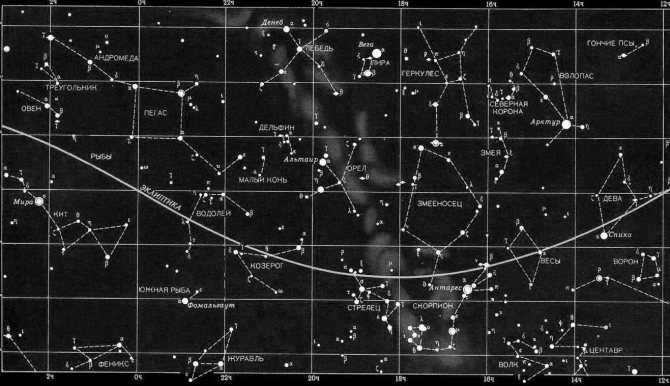
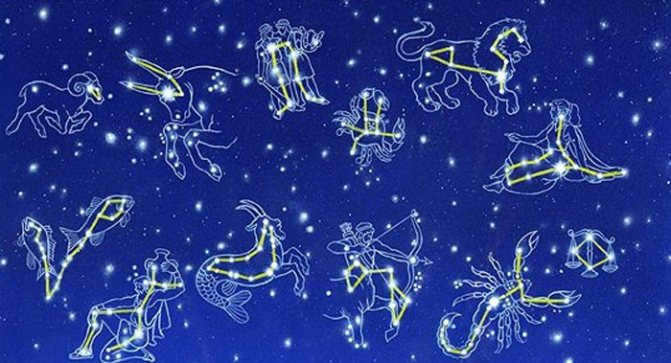
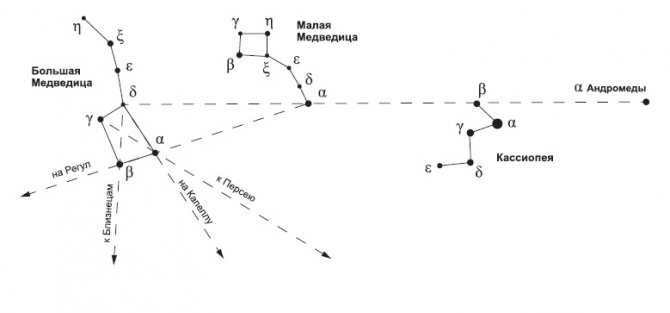

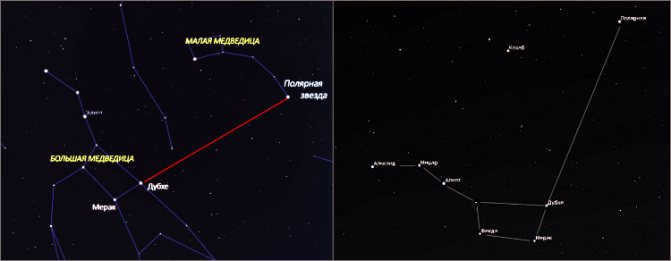
Light pollution
Observation of celestial bodies is becoming increasingly challenging due to the presence of excessive artificial lighting in urban areas. In cities, only the most luminous stars, planets, as well as the Sun and the Moon, are visible to the naked eye. As a result of light pollution, approximately 60% of Europeans and nearly 80% of North Americans are unable to witness the radiant streak of the Milky Way – the projection of our Galaxy’s disk in the celestial sphere.
In 1994, during a power outage caused by an earthquake in Los Angeles, numerous reports were received by the police regarding the appearance of a peculiar “giant silvery cloud” over the city. It was later revealed to be the Milky Way, which had long vanished from the luminous gray night sky of the bustling metropolis…
Nevertheless, there are still regions in Russia where it is possible to witness the enchanting spectacle of the Milky Way and stars with a magnitude of 6th. In a broader sense, it is advisable to venture at least 20-30 km outside the city limits in order to fully appreciate the awe-inspiring beauty of the celestial heavens.
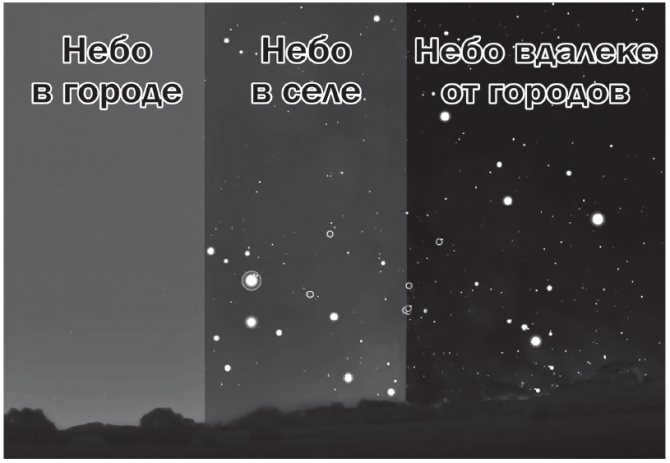
Scale indicating the level of light pollution in the sky
What other constellations can be seen in the night sky in the northern hemisphere?
We have already discussed the constellations near the North Pole that are visible year-round. However, there are many more fascinating celestial formations to discover in the Northern Hemisphere during the nighttime. Let us delve deeper and explore some additional stunning star groups.
Tips on locating the Andromeda constellation and galaxy
Despite being the nearest galaxy to our Milky Way and having a rapid approach towards us, the Andromeda Nebula may appear as a small star. It is one of the stars within the Andromeda constellation. Locating the Andromeda constellation in the night sky is not a challenging task, although the galaxy itself may be barely visible.
Fascinating! The Andromeda Nebula stands out as the sole galaxy observable to the naked eye at polar and temperate latitudes. Just imagine the vastness of the cosmos!


To locate the Cassiopeia constellation and Polaris, you can follow these steps. First, find Polaris and then draw a straight line from Polaris through the star Shedar in Cassiopeia (as shown in the picture). By extending the line from Shedar, you will eventually come across a small cloud located about halfway between these stars. This cloud is known as the Andromeda Nebula galaxy. Additionally, you will also notice three stars that are part of the Andromeda constellation. For a clearer understanding, please refer to the picture.
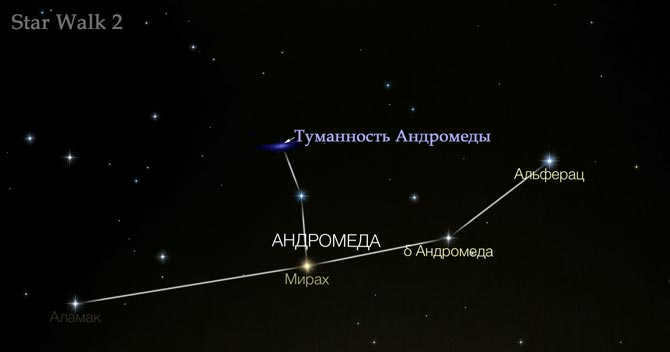
The arrangement of stars known as Perseus in the celestial sphere.
Perseus is situated adjacent to Cassiopeia. It can be easily located by simply gazing “below” the letter M and Andromeda. This constellation is quite sizable and can be prominently seen during the summer months, specifically in the month of August.
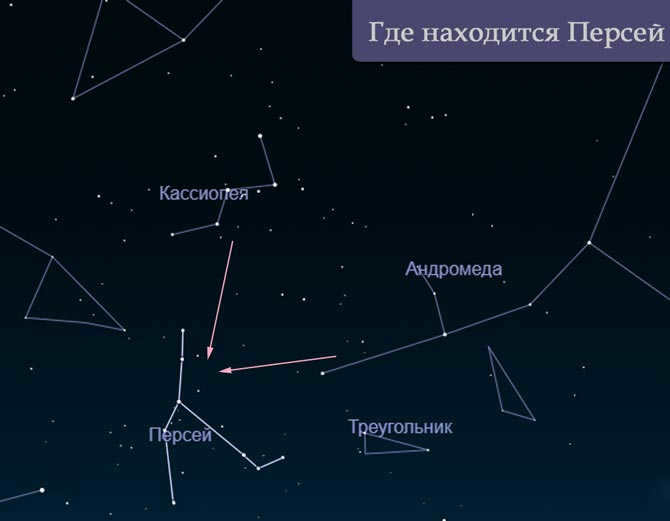
The enigmatic constellation Orion
If we descend further into the celestial sphere, somewhere amidst Perseus and the radiant star Capella from the constellation of Ascendant (which is particularly prominent in the northeastern sky during the summer), we will encounter the enigmatic stellar protagonist – the constellation Orion. It is a celestial formation located along the equator, making it visible from both the northern and southern hemispheres. However, everything has its designated time… And the appearance of this mythical hunter is also predetermined.

Orion can be observed most clearly during the winter season. Its most prominent star, the red supergiant Betelgeuse, is among the first to become visible in the nighttime sky. If you want to catch a glimpse of Orion during the summer months, you will need to wait until the middle of the night. For instance, in August, around 3-4 am, it can be spotted in the southeastern region of the celestial dome.
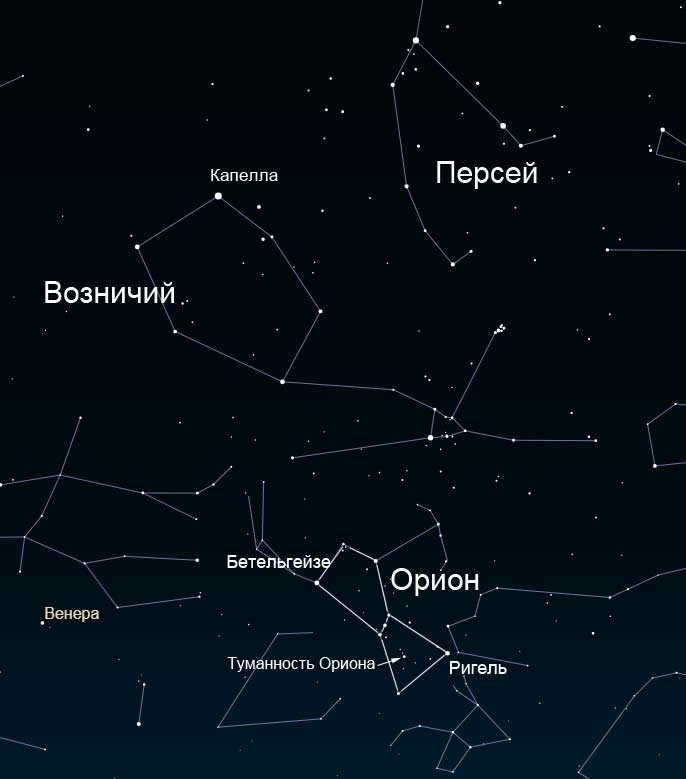

Locating the constellation Orion is a simple task, thanks to its distinctive asterism known as Orion’s Belt. This asterism consists of three bright stars aligned in a straight line. By expanding our view, we can also observe a recognizable figure resembling an hourglass formed by the stars Betelgeuse, Bellatrix, Saif, and Rigel.
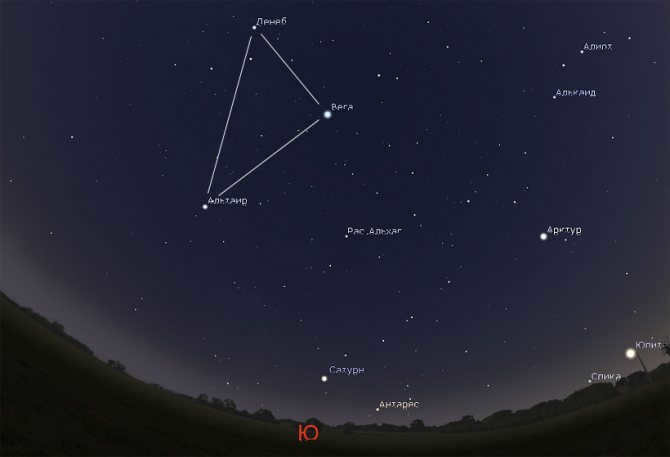
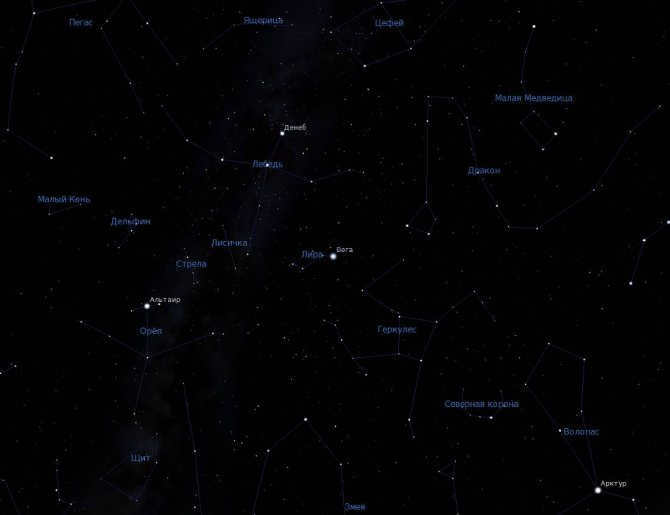
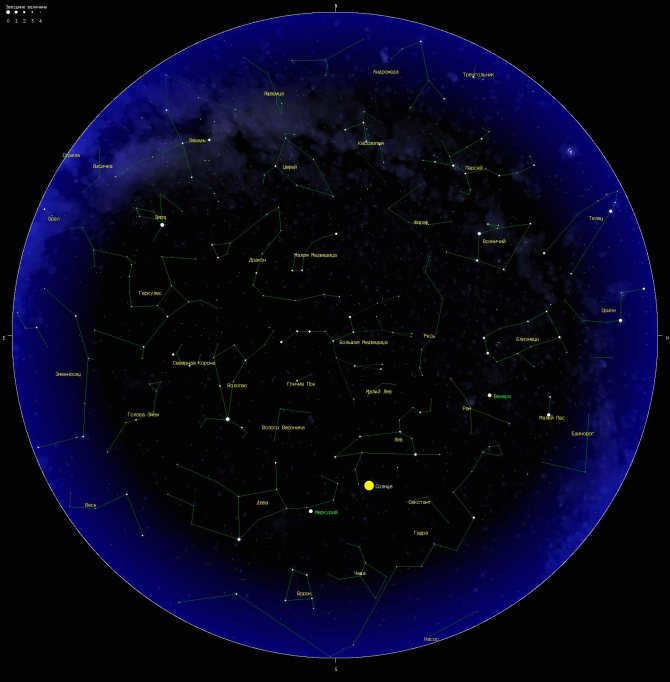
Location that can be seen
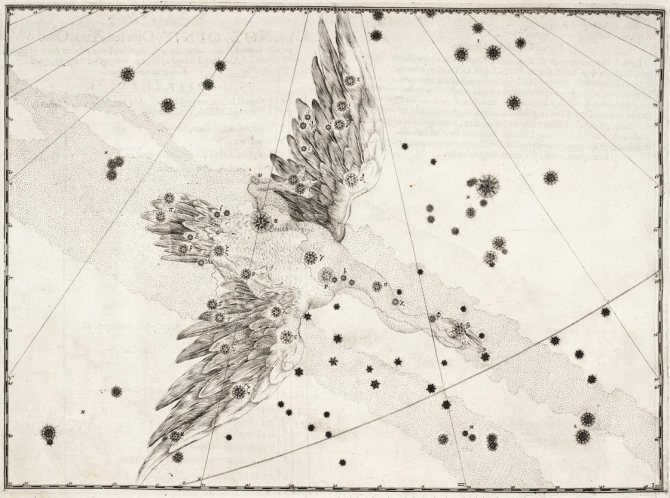
This image depicts the Swan constellation as it is presented in Johann Bayer’s famous atlas “Uranometria” from 1603.
The position of the faint stars can be determined by locating the luminous ones, thus identifying the desired constellation. Throughout history, the bright stars have been assembled together to simplify the process of locating constellations. These constellations have been named after animals (such as Scorpius and Ursa Major), heroes from Greek mythology (like Perseus and Andromeda), or ordinary objects (such as Libra, Arrow, and Northern Crown). Starting from the 18th century, some of the bright stars within each constellation have been designated with letters from the Greek alphabet. Additionally, approximately 130 brilliant stars have been assigned individual names. Over time, astronomers have assigned numbers to these stars, which are now used to identify faint stars. Since 1922, certain major constellations have been divided into smaller constellations, and instead of groups, they are now considered sections of the sky. Currently, there are 88 distinct sections of the sky known as constellations.
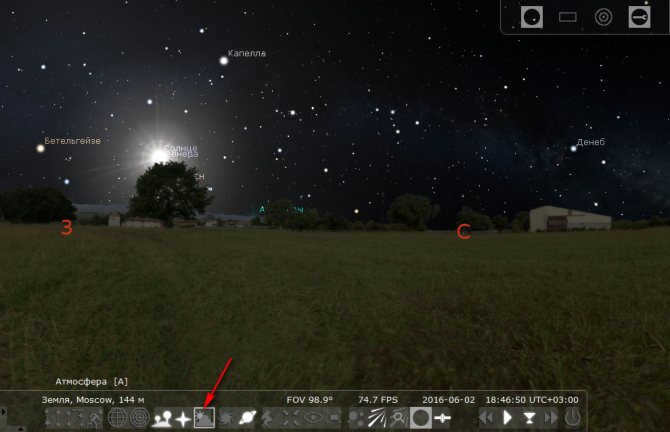
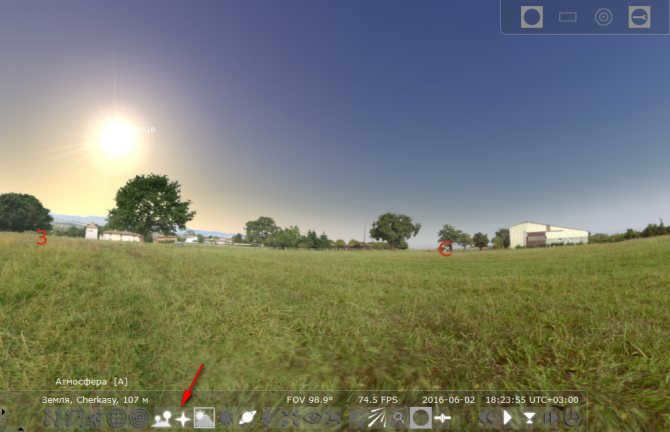
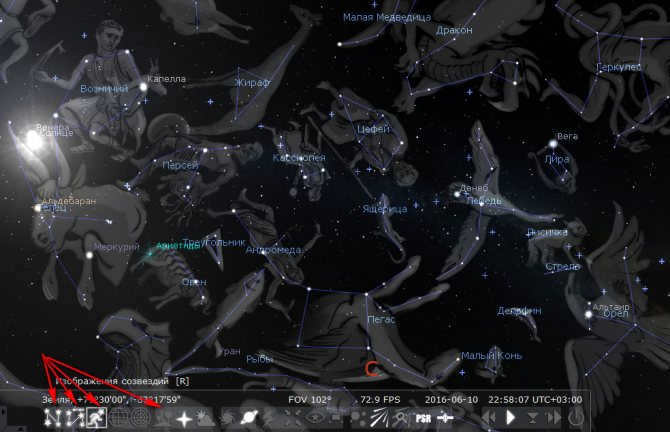
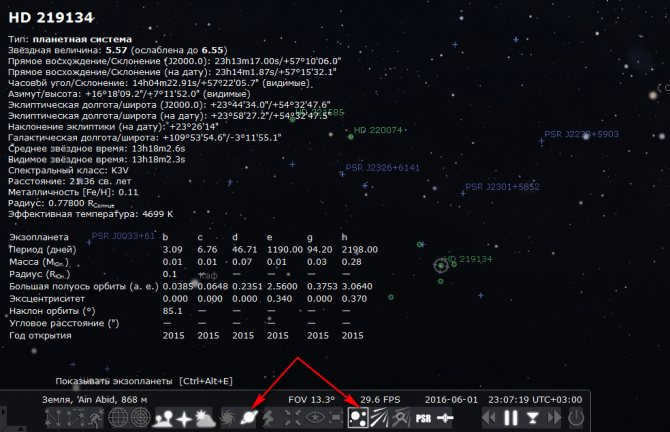
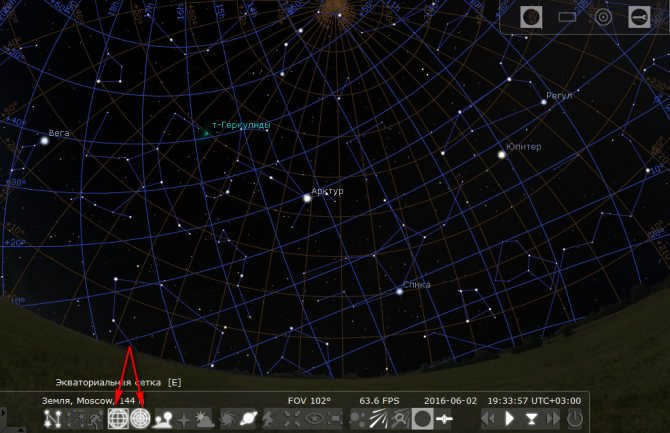
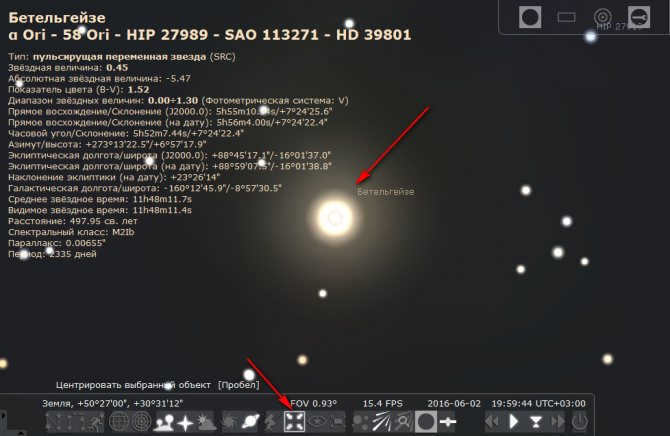
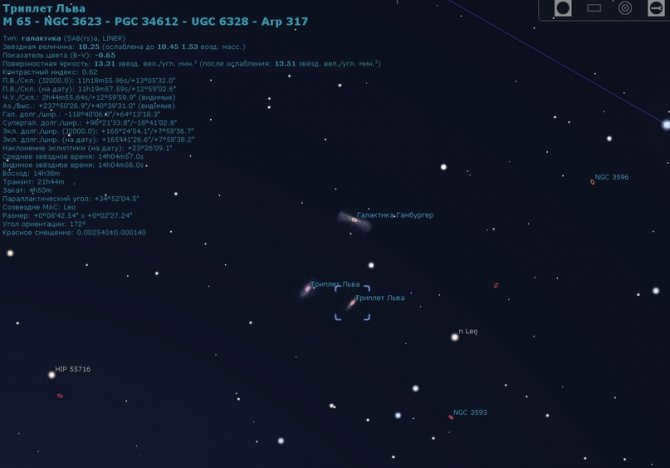
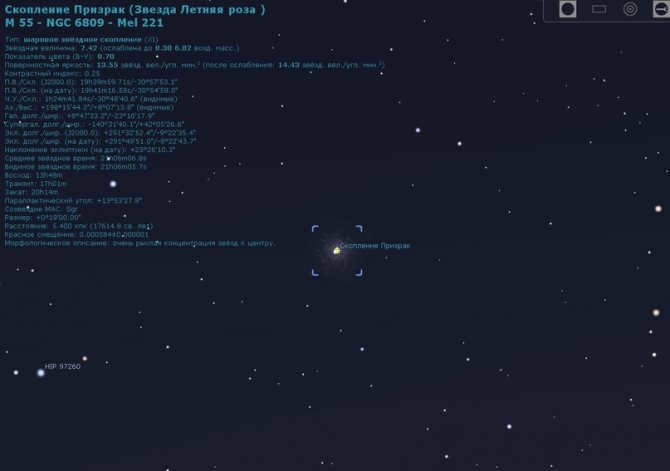
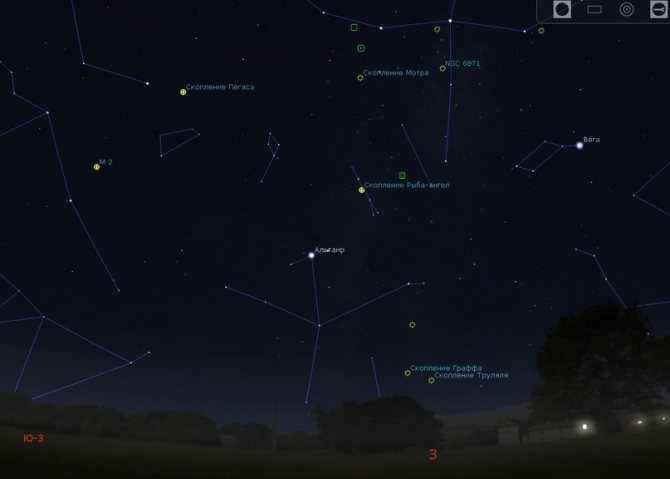
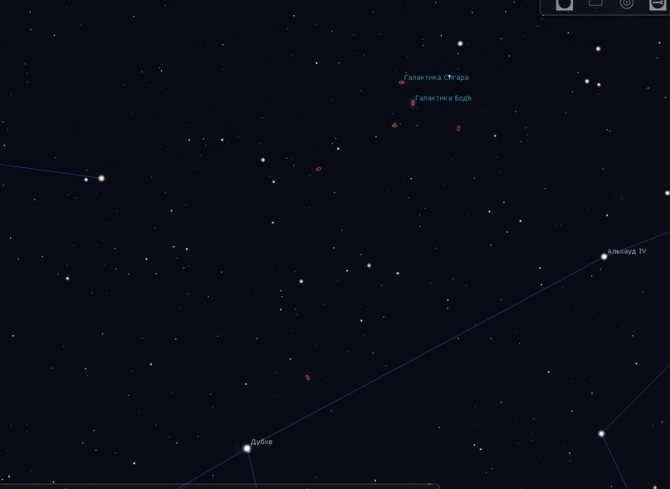

Planetary Movement in Relation to Stellar Background
By observing the night sky for a few hours, it becomes apparent that the entire arrangement of stars gradually shifts from east to west. This phenomenon, also observed with the sun and moon, is a result of the Earth rotating on its axis. The rotation completes a full cycle in twenty-four hours.
Despite the seemingly constant motion of the starry sky, the relative positions of the stars rarely change. Due to their immense distance from us, we are unable to perceive their movement in space. Consequently, the pattern of constellations has remained unaltered for thousands of years. This led astronomers of earlier eras to refer to stars as fixed entities.
Planets have unique characteristics due to their movement among the stars! The movement patterns of the inner planets, Mercury and Venus, differ from those of the outer planets, Mars, Jupiter, and Saturn. The inner planets are always relatively close to the Sun in the sky, while Mars, Jupiter, and Saturn can even be found on the opposite side of the sky compared to our daytime star. Furthermore, the outer planets occasionally create loops against the backdrop of stars, altering the direction of their movement.
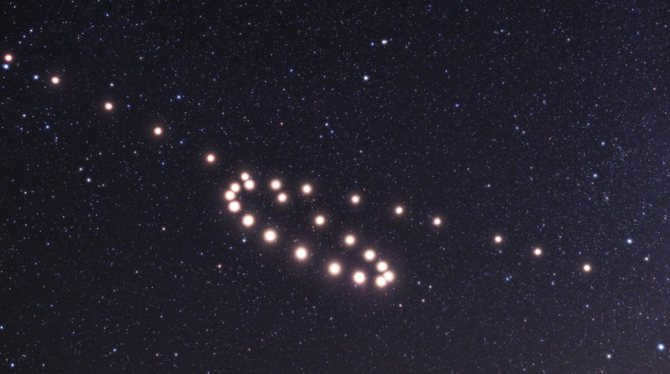
The motion of Mars in relation to the stars during the year 2021 can be seen in the image above. Back in June 2018, Mars changed its direction of movement from west to east and began to move in a backward motion, forming a loop. The images captured in the photo were taken at intervals of 5 to 9 days. The photograph was taken by Tunc Tezel and featured on APOD.
In order to identify the movement of a planet like Mars, it is necessary to observe it over the course of several evenings. This is because the movement of a planet can be mistaken for that of a star if not observed over a period of time. However, if one is familiar with the constellations, they may be able to spot an “extra” star within a constellation, which is likely to be a planet if it is also bright.
List of constellations arranged in alphabetical order along with their photographs
The majority of these constellations are named after mythological heroes from Ancient Greece, animals, and significant objects from contemporary times.
Oftentimes, astronomers designate clusters of celestial bodies based on the shape they resemble.
Take note! The night sky is adorned with hundreds of stars, and by referring to their photographs, you can easily locate the desired constellation when you venture outside on a clear evening.
Thanks to these names, modern scientists are able to gain insight into the lifestyles and thought patterns of people who lived in earlier times.

Now, we will examine a variety of names in alphabetical order, accompanied by pictures:
| Name | Total number of stars | The number of stars visible to humans |
| Andromeda | 54 | 3 |
| Big Dipper | 71 | 6 |
| Big Dog | 56 | 5 |
| Magpie | 53 | 2 |
| Raven | 11 | 0 |
| Hercules | 85 | 0 |
| Hydra | 71 | 1 |
| Dolphin | 11 | 0 |
| Unicorn | 36 | 0 |
| Painter | 15 | 0 |
| Serpentine | 55 | 2 |
| Indian | 13 | 0 |
| Swan | 79 | 3 |
| Small Horse | 5 | 0 |
| Pump | 9 | 0 |
| Eagle | 47 | 1 |
| Peacock | 28 | 1 |
| Lynx | 31 | 0 |
| Grid | 11 | 0 |
| Telescope | 17 | 0 |
| Phoenix | 27 | 1 |
| Chameleon | 13 | 0 |
| Circulus | 10 | 0 |
| Bowl | 11 | 0 |
| Shield | 9 | 0 |
| Southern Triangle | 12 | 1 |
| Lizard | 23 | 0 |
Studying and observing the constellations is a fascinating activity. Each day, they undergo a slight westward movement, while new constellations emerge in the eastern sky. Over the course of a year, it is possible to witness all the constellations that are visible in a particular hemisphere.
Indeed, a knowledge of the constellations is essential for anyone interested in astronomy. It serves as the foundation, much like the alphabet is crucial for reading or numbers are vital for mathematics. By familiarizing oneself with the constellations, it becomes easier to locate any object of interest in the night sky. It is also beneficial to be aware of the brightest stars within these constellations.
In order to study the constellations, one must have access to maps. These maps can be obtained or alternatively, the exceptional free program Stellarium can be utilized on a computer or mobile device.


